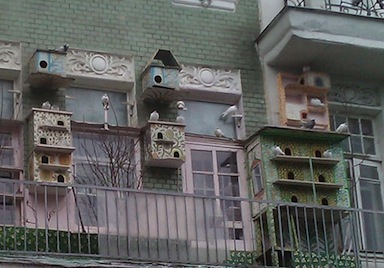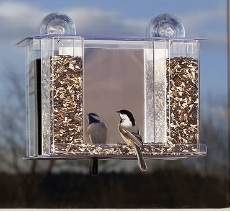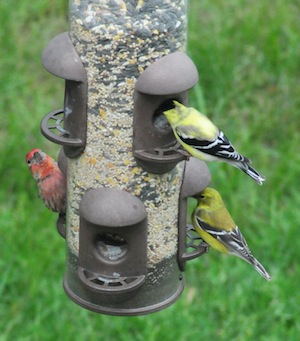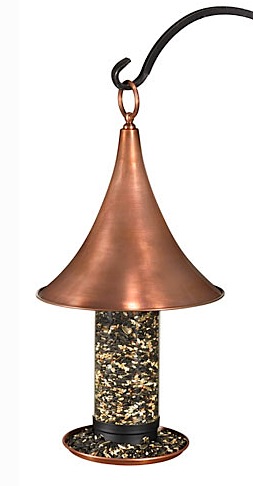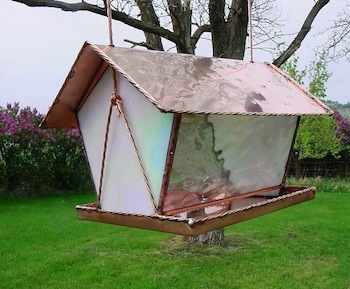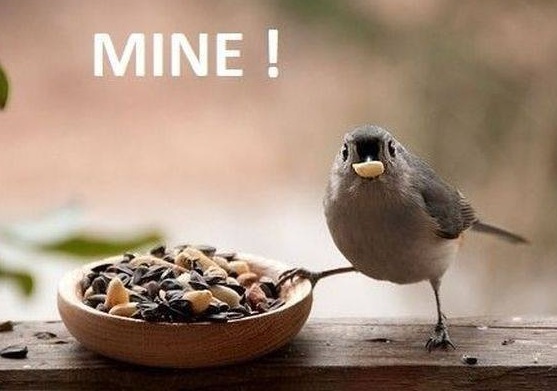-
Will Blacony Birds Find Your Window Bird Feeders
Yes, we think the answer to that question is definitely a yes!
Cruising along through one of social media’s popular sites, we saw this cool image which immediately sparked the idea for a short article on window bird feeders. Along with a recent email from a friend who had just started feeding hummingbirds in her Golden, Co town (and she lives on the 4th floor) – we knew that yes, there are birds who visit balconies to find food or shelter.
Now maybe these are just some city-dwelling pigeons shown here, but the bird homes sure are neat looking. The trick might be to first offer something substantial that birds will see. Maybe something hanging near the ledge, like a birdbath with fresh water, or a suet feeder… something that won’t leave any mess below for neighbors 🙂 They’ll appreciate that too! Keeping a simple saucer of fresh water available at all times may even lure birds to your balcony.
Once birds are familiar with an offering, place a feeder on the window, or glass sliding door. Obviously, it would do best on the stationary door that doesn’t open. Like that famous saying… “if you build it-they will come”.
Window feeders are available in all shapes, sizes and varieties too; for nectar, seed, suet, mealworms, fruit and nuts, the secret is letting birds know you’ve got the goods! And the best news with feeders placed on balconies… no squirrels like the typical backyard. Even if you reside say on the seventh floor, there’s no reason you can’t enjoy the wonderful antics of feathered friends!
-
What’s all the frenzy around your tube bird feeder?
Several fellow birders have noticed an increase in activity at feeders recently. A few guesses were about the wet season and lush plant growth, possibly providing fewer seeds than usual for this time of year. One person writes: “Finches, Cardinals, Chickadees, Tufted Titmice, White-breasted Nuthatches, and more have increased their activity at my tube bird feeder significantly, even fighting each other. I was filling the feeder once a week, but the birds are emptying it daily.”
So what’s the reason behind the increased activity? Because many species are molting their feathers right now, they have an increased need for a steady diet of high quality food. Chickadees, titmice, nuthatches and others are kicking into high gear with hoarding seeds right now too. If you watch some of these birds closely, you’ll see them eating some of the seeds but they will be stashing many more of them under the bark of older trees, and or poking them into holes and cracks in trees and other locations.
Your location plays a role as well. “This is actually the time of the year when there is the highest number of plants that are producing seeds, mast and or fruit out in forests, fields and “weedy” pasture lands. City lawns and evergreen landscaping and ornamental landscape trees often do not produce any seed type food for wildlife at this time of the year. So it might depend on your particular location as to how much food is available for each of these different species.”
Seeing empty feeders just goes against our grain 🙁 If birds’ activity has increased at your feeder that it takes filling everyday… it may be a good time for a bigger one? Winter’s not too far off and these resilient resident birds are sure to hang around a dependable food source.
This new tube feeder’s a beauty too! At a whopping two feet tall, the large Castella features a venetian bronze finish over steel, with a seed tray for less waste and easy perching. And the killer turret… it adds a magical touch to any garden setting!
-
glass bird feeder is built to last
Although wood is good for birdhouses, it’s not always best for feeders because squirrels chew wood! Over time wood will weather, sometimes nicely-sometimes not depending on the quality. Wood is porous and therefore harbors bacteria and mold… not good for birds. Copper, glass, or recycled plastic provides a slick surface that’s more resistant to bacteria, much easier to clean and way better for the birds.
A stained glass bird feeder like this hopper model allows for various seed mixes. It won’t ever fade, warp or rust, and it’s chew-proof by squirrels. Handcrafted in the USA, it’s available in about eight different colors, and features a hand hammered copper roof.
What’s the best kind feeder to get when starting out? It’s simply got to be the one you will maintain. Basic black oil sunflower is a popular seed that many species enjoy. If you don’t care for the hulls or mess below feeders – opt for sunflower hearts or a “no-waste” mix. These cost a little more, but every morsel is consumed, no messy ground waste below feeders! Cheap seed with fillers (like milo and millet) will end up on the ground, and in damp or humid conditions, creates another breeding ground for bacteria and mold. Ground feeding birds like cardinals, towhees and juncos will sift through this junk looking for a bite to eat. Yuck!
If the only feeder you’re up to maintaining is a simple bowl, that’s okay too. Just keep it clean and keep food fresh… and they wi
ll come! And don’t forget to add a water source, a shallow bowl or plant saucer with fresh water creates a refuge on hot summer days!

